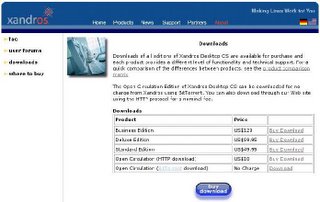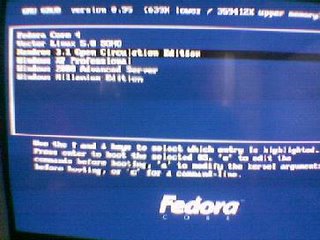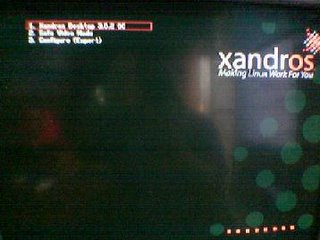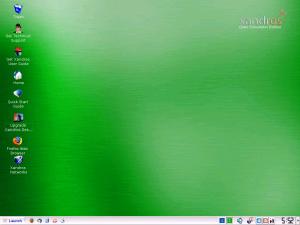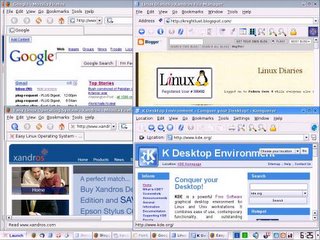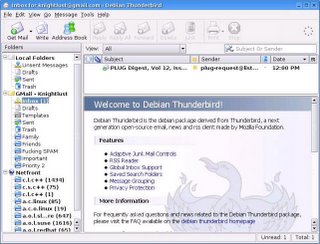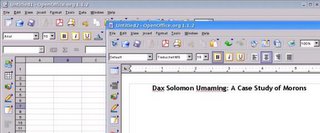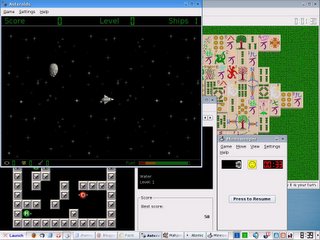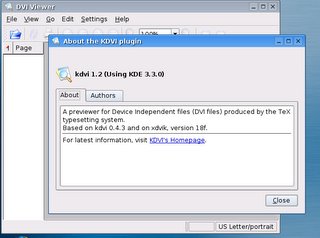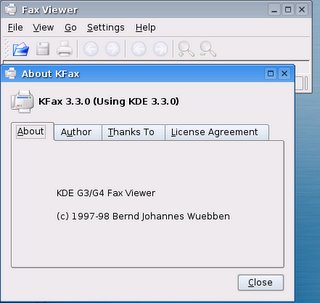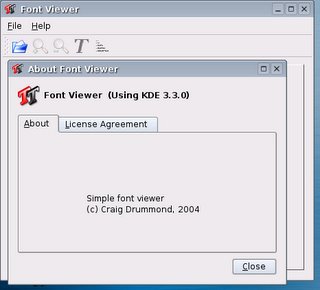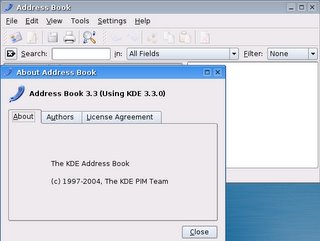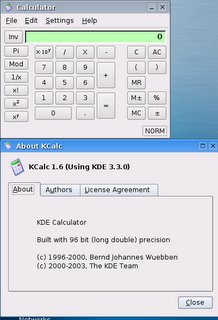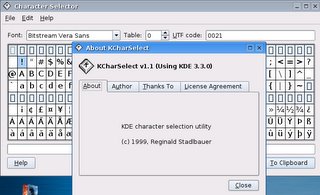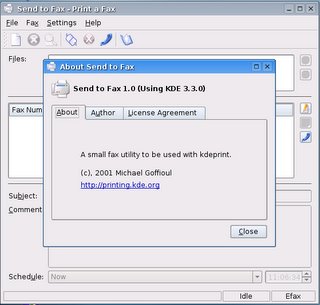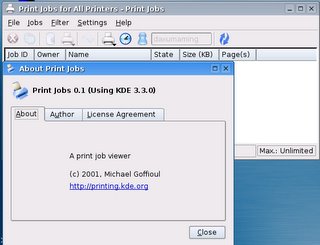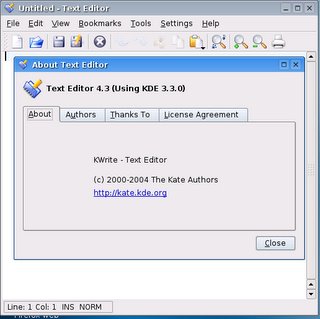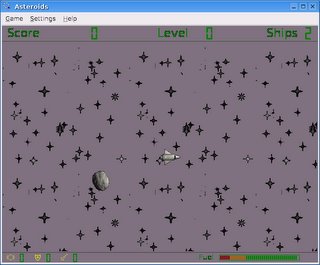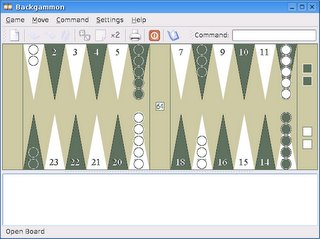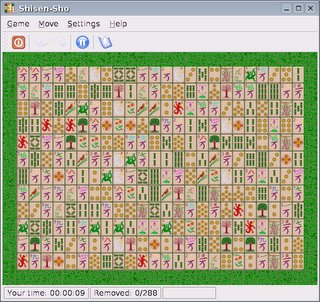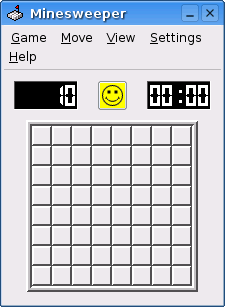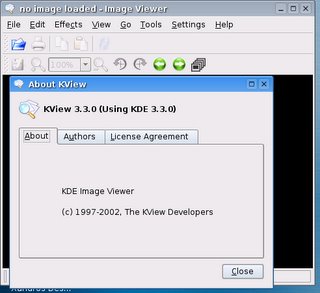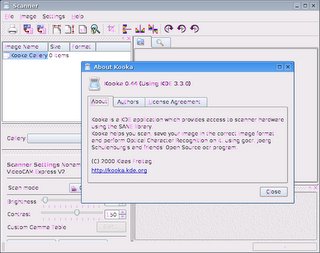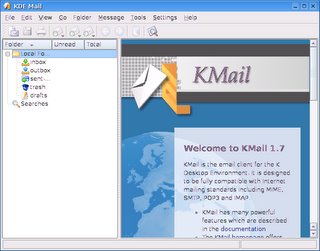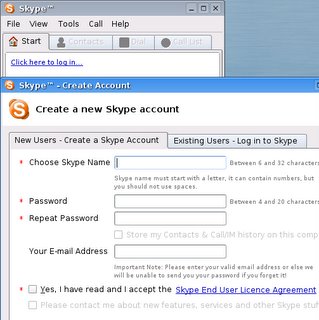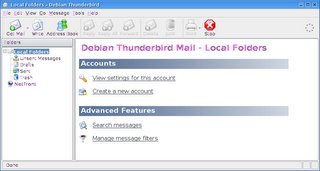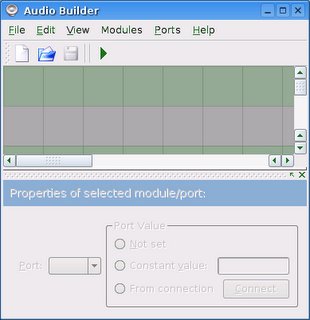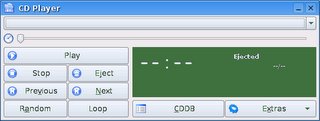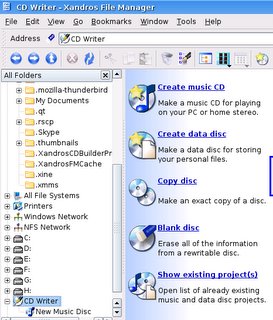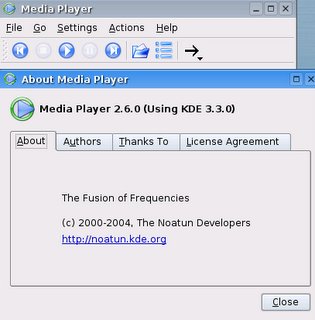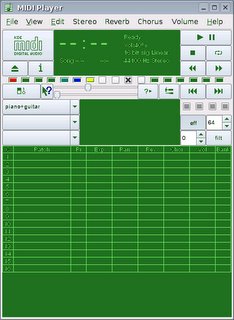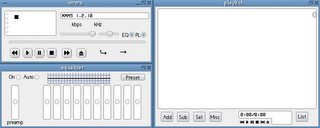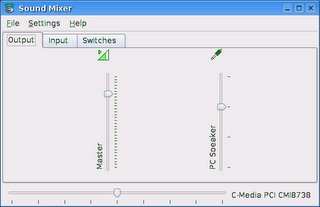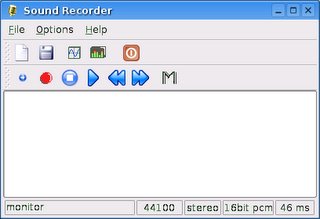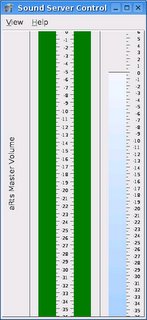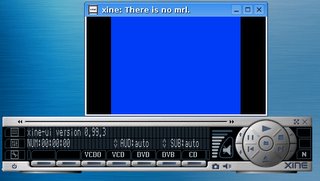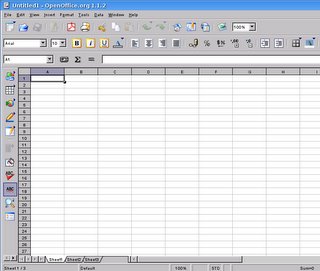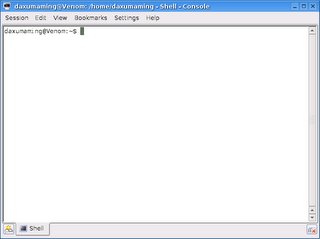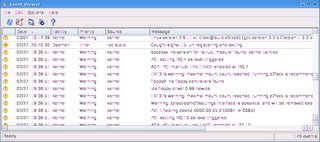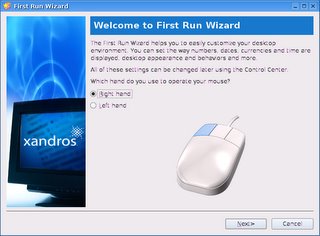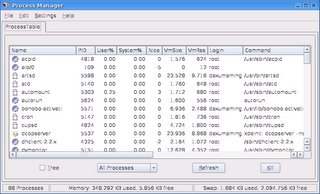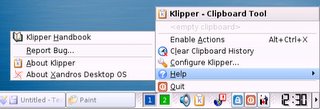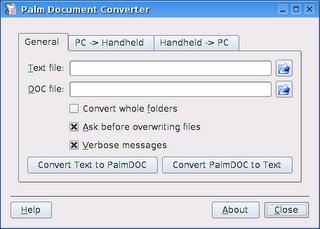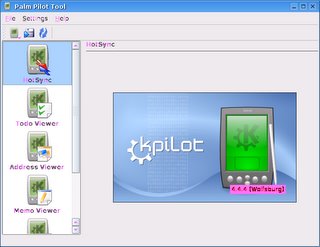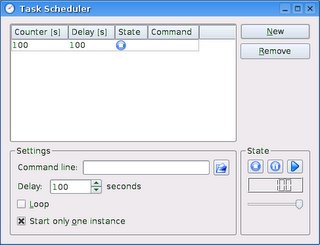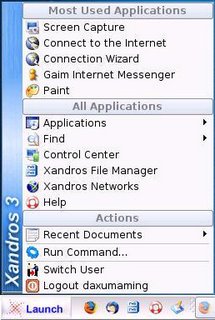Linspire 5.0 Grub to LILO Conversion
Well, I was able to install Mandriva 2006 on my hda9 partition (10GB) and it installed LILO as it's boot loader. I'm pretty disappointed with Mandriva since it didn't auto-detect other Linux OS installed on my drive, which is Ubuntu 5.10 and Linspire 5.0. It was capable enough of detecting and auto-mounting my Windows partitions but the boot-loader presented them as "windows", "windows1", "windows2", etc. and I didn't have any idea what version of Windows that is. The fault might probably be with LILO or simply the design of Mandriva which prevented LILO from detecting and configuring my OS. Good thing that I was able to boot my Ubuntu but I had a hard time of booting my Linspire. Anyway here's my Ubuntu entry on LILO which took me around 30mins researching and testing it out:
image=/mnt/hda8/boot/vmlinuz-2.6.12-9-386
label="Ubuntu5.10"
root=/dev/hda8
initrd=/mnt/hda8/boot/initrd.img-2.6.12-9-386
append="nolapic resume=/dev/hda8 splash=verbose"
I'm pretty glad I was able to boot it up.
As of this writing, I've been researching, Googling out ways on how to boot my Linspire with LILO. So far, I've been through:
http://forums.linspire.com/ and http://help.linspire.com/ with no luck. I was expecting an answer from the developer's forums but went back to Google with tears.... manly tears. I've wasted 3 hours searching for a solution.
Good thing my patience didn't run out and I was able to find this article on the web.
http://pclinuxonline.com/modules.php?mop=modload&name=Splatt_Forums&
file=viewtopic&forum=57&topic=7004&opa=notifica
Yes, it's PCLinuxOS.....
It basically deals with Grub to LILO conversions. Here's the entry for Grub:
title Linspire 5.0.59 on /dev/hda5
root (hd0,4)
kernel /boot/vmlinuz-2.6.10 root=/dev/hda5 rootdev=0x0305 ramdisk=32000 vga=0x311 splash=silent video=vesafb:nomtrr video=vesafb:nomtrr ro jiffymount=noatime rw mem=nopentium resume2=swap:/dev/hda5:0x8800@4096
initrd /boot/initrd-2.6.10.gz
# (Boot priority: 102, mounted at /)
Here's their LILO conversion:
image=/mnt/hda5/boot/vmlinuz-2.6.10
label="Linspire_Lilo"
root=/dev/hda5
initrd=/mnt/hda5//boot/initrd-2.6.10.gz
append="ramdisk=32000 splash=silent video=vesafb:nomtrr video=vesafb:nomtrr ro jiffymount=noatime rw mem=nopentium resume2=swap:/dev/hda5:0x8800@4096"
vga=788
read-only
Did it work??? According to the last entry, it did!
So here's my Grub entry:
title Linspire 5.0.59 on /dev/hda7 (on /dev/hda7)
root (hd0,6)
kernel /boot/vmlinuz-2.6.10 root=/dev/hda7 rootdev=0x0307 ramdisk=32000 vga=0x311 splash=silent video=vesafb:nomtrr video=vesafb:nomtrr jiffymount=noatime resume2=swap:/dev/hda7:0x8800@4096
initrd /boot/initrd-2.6.10.gz
savedefault
boot
Let's see if I can convert it, I'll just append the results here later.... Wish me luck!
***Edited 19 March 2006 6:32AM***
A-ha! Success! It took me around 45mins configuring /etc/lilo.conf and rebooting my PC to get Linspire 5.0 working, but I got it! It was a fulfilling experience to finally see the Linspire logo staring back at me. My wife asked me though, "Was worth it wasting 6 hours installing Mandriva and configuring your boot-loader?" My answer; " HELL, YEAH!!!!" I learned something new, and it didn't matter if took 3 or 10 hours of my time, as long as I learn something. Well, here's my Linspire entry in LILO:
image=/mnt/hda7/boot/vmlinuz-2.6.10 label="Linspire5.0" root=/dev/hda7 initrd=/mnt/hda7/boot/initrd-2.6.10.gz append="ramdisk=32000 splash=silent video=vesafb:nomtrr video=vesafb:nomtrr jiffymount=noatime resume2=swap:/dev/hda7:0x8800@4096" vga=0x311 read-only
And here's my full /etc/lilo.conf just in case you need it:
# File generated by DrakX/drakboot
# WARNING: do not forget to run lilo after modifying this file
default="Mandriva"
boot=/dev/hda
map=/boot/map
keytable=/boot/us.klt
menu-scheme=wb:bw:wb:bw
prompt
nowarn
#timeout=100
message=/boot/message
image=/boot/vmlinuz
label="Mandriva"
root=/dev/hda9
initrd=/boot/initrd.img
append=" acpi=ht resume=/dev/hda6 splash=silent"
vga=788
image=/boot/vmlinuz
label="Mandriva-NoFB"
root=/dev/hda9
initrd=/boot/initrd.img
append="acpi=ht resume=/dev/hda6"
image=/boot/vmlinuz
label="MandrivaFailSafe"
root=/dev/hda9
initrd=/boot/initrd.img
append=" failsafe acpi=ht resume=/dev/hda6"
image=/mnt/hda8/boot/vmlinuz-2.6.12-9-386
label="Ubuntu5.10"
root=/dev/hda8
initrd=/mnt/hda8/boot/initrd.img-2.6.12-9-386
append="nolapic resume=/dev/hda8 splash=verbose"
image=/mnt/hda7/boot/vmlinuz-2.6.10
label="Linspire5.0"
root=/dev/hda7
initrd=/mnt/hda7/boot/initrd-2.6.10.gz
append="ramdisk=32000 splash=silent video=vesafb:nomtrr video=vesafb:nomtrr jiffymount=noatime resume2=swap:/dev/hda7:0x8800@4096"
vga=0x311
read-only
other=/dev/hda1
label="WindowsXP"
table=/dev/hda
other=/dev/hda2
label="Windows2000AS"
table=/dev/hda
other=/dev/hda3
label="WindowsME"
table=/dev/hda
other=/dev/hdb1
label="Windows98SE"
table=/dev/hdb
map-drive=0x80
to=0x81
map-drive=0x81
to=0x80
Please remember that this is LILO from Mandriva 2006 Free Edition. I just modified it so it'll boot all OS installed on my PC. Currently, I have Mandriva 2006, Ubuntu 5.10, Linspire 5.0.59, Windows all booting and working fine.
And in case you needed to know, LILO is installed on my MBR. There's no sense installing it on your partition since both Grub and LILO are pretty much stable and usable.
One more thing, I edited this entry on Mandriva since, for some weird reason, Linspire just won't allow me to go on beyond the Blogger's Dashboard. Mozilla just hangs, probably because of scripts on this page.
(1) It's too hard to setup the boot-loader, doesn't matter if you're using Grub or LILO, there's just too many parameters to worry about. Although most distributions do, Linspire won't allow you move further unless you have every entry correct. This isn't good for people migrating to Linux, unless they decide to let Linspire take over the whole disk.
(2) Boot-up is waaaaay tooooo sloooow! Windows XP takes around 2mins to boot-up while Linspire takes 3mins 52secs. Oh sure, I have a slow computer (P3 733Mhz 384MB), I haven't optimized (recompiled kernel) Linspire yet, and it loads a lot of modules for it to be perfectly compatible with every hardware thrown it's way, but that's still no excuse!
(3) I have the Free Edition, so I expected a couple of advertisements, but this is ridiculous! Everytime I click on something, it brings me to Linspire homepage encouraging me to buy or upgrade the OS. I know! I know! This is a commercial software, but if it'll hinder me from doing some real work, then I guess this won't be an OS for me.
(4) Did I mention that I can't go beyond Blogger's Dashboard?
(5) Right after installation, KDE is positioned half-way to the right of the screen. I have to reboot twice to get it right.
(6) The forums is in anarchy. Although it's properly categorized, it's not really moderated. The thread's a mess!
But that's just some stuff I don't like. Here's the stuff I do like.
(1) The "Click N Run" idea is fantastic! Allows you to just click on the software you want and Linspire would automatically download and run it for you. Now that's Debian!
(2) They got Anti-Virus software (like I need one!) and Surf Safe, protecting you and your family from malicious websites!
(3) Well documented! It has a video where it can walk you through basic stuff and the support site is pretty much complete with tutorials, tips, and troubleshooting steps.
(4) Although I haven't really tried it, from what I've observed from Linspire members, Phone and Email Tech Support is great! Since I'm also in the line of business, it really intrigues me what their agents are capable of.
Well, that's just my observation. Please take note that I've only been using Linspire for about 4 days. I might find something much more interesting and fun to do with this OS. Give me a couple more days and I'll post the results here!
